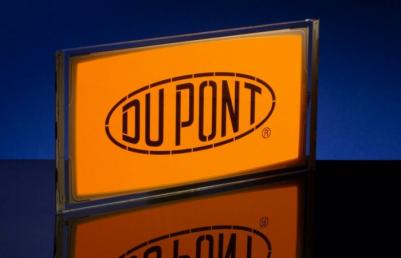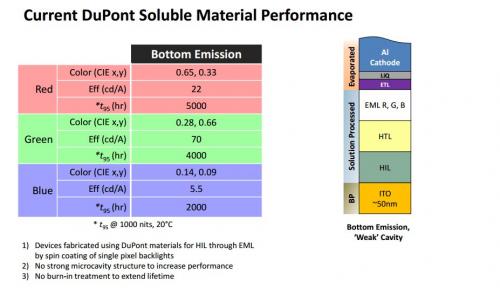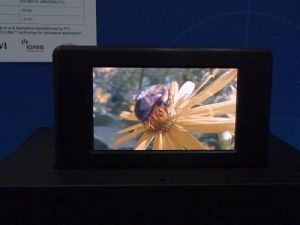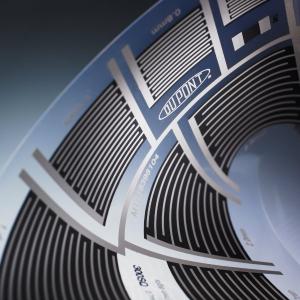DuPont has been working on OLED materials and processes for a long time, but it's been a while since we heard any update. David Flattery, DuPont's OLED unit Director of Operations was kind enough to update us on the company's materials and OLED technologies.

Q: Dave - thanks for this interview. We know that DuPont is focusing on soluble OLED materials and processes. When do you see the OLED display industry starting to adopt such materials?
DuPont is focused on developing OLED materials for evaporation and soluble technologies, as well as working with our partners on our proprietary printing process.
Many in the industry believe that 2017 will be the year of mass production for printed OLED televisions, and while we cannot disclose the manufacturing plans for our partners, we have already seen one large manufacturer announce that they will pilot solution- processed OLED displays up to gen-8 in 2015.
DuPont is well prepared for when the market does scale-up. We have made an important investment at our Stine Haskell facility in Newark, Delaware, that will allow us to produce materials for OLED displays at a larger scale. We will be sharing more information about that soon.
Q: What do you feel are the major challenges yet in places for soluble OLED production?
Soluble OLED production is desirable because it generates less waste and allows for more precision. Historically the device performance achievable with solution processing lagged that of evaporation, and that had been a barrier for commercialization. But our most recent material performance data shows that with our latest generation materials and process steps, device performance comparable to evaporative processed displays can now be achieved. Now that this major barrier has been overcome, it clears the way for large manufacturers to make commitments and investments in mass production.

Q: It seems that the OLED lighting industry is faster in adopting wet-coating techniques. Will this trend continue?
Yes, we believe so. The cost target for OLED lighting is far below the cost targets for displays in terms of cost per square meter, so there is greater incentive to use more cost-effective coating techniques. Additionally, OLED lighting panels don’t require the pixilated patterning that displays do, so the architecture lends itself well to coating techniques.
Q: It's been over 2 years since we heard any updates on DuPont's nozzle printing technology. Can you update us on the current business?
Yes, we continue to work closely with our partners in piloting our proprietary printing process and helping them progress towards commercialization of solution-processed OLEDs. We are also engaged with additional potential commercial partners.
Importantly, DuPont is also developing and introducing new OLED materials that can be used for all manufacturing technologies - nozzle, ink-jet and evaporation. These materials are currently being tested for scale-up by multiple companies.
Q: Back in 2012 DuPont said it earned $20 million from OLED IP licensing, reportedly from Samsung. can you say anything regarding current customers that evaluate the technology?
We also executed a licensee agreement with another large display maker and are in active discussions with other display makers for additional partnerships. The names of our licensees and potential partners remain confidential.
Q: DuPont supplies both soluble materials and also have developed its own production process (based on Nozzle printing). Do you offer this as a complete package or do you also provide just materials?
We offer materials and process technology separately. DuPont OLED materials and propriety printing process are available as a package, and we also work with customers on material engagements only. We believe that the best device performance for printed OLEDs has been achieved by the combination of our materials AND our solution printing process. However, if a display manufacturer chooses not to license our process, we can still offer them the highest performing materials to be used in alternative processes.
Q: Can you update us on your evaporable OLED materials?
DuPont offers materials for evaporation processes, and we have several very high performing evaporable materials, and we are engaged in evaluations of those materials with OLED manufacturers.
Q: DuPont has a 4G demonstration equipment installed at the company's lab. Can you detail the system and its components?
We have scaled-up two gen 4 printers from a leading flat panel display equipment maker that we use to validate the key performance aspects of our materials and printing process, including uniformity and yield. We use these tools to test our technology all the way through the production process. In addition to the 4G printers, we have a full set of smaller, standard FPD equipment that allows us to evaluate the entire OLED fabrication process on either our own or customer backplanes.
 DuPont 4.3-inch printed OLED prototype
DuPont 4.3-inch printed OLED prototype
DuPont is unique, because we are the only material provider that can evaluate performance at that scale. Our success has enabled the flat panel display equipment maker to construct an 8 gen printer prototype that is currently in testing. This collaboration provides us with critical feedback on OLED materials and process optimization at the scale of mass production.
Q: Earlier this year you launched an OLED lighting collaboration program with the Holst Centre. Any updates on that activity?
DuPont Microcircuit Materials and Holst Centre announced in May 2014 that they had extended their collaboration focused on advanced materials for the printed electronics industry. The collaboration is expected to advance technology in several areas, including nano-silver conductor inks for grids and bus lines in OLED lighting.

The work concentrates on optimizing printed metallic structures on flexible substrates in terms of conductivity, fine line deposition and low energy sintering. A variety of roll-to roll compatible printing techniques is being studied including screen, flexography and ink jet. We look forward to successful, continued research in this area.
Thanks Dave, good luck to both you and DuPont!
Comments
Philips just pulled the plug from OLED, so it is very optimistic to say, that they will be a large volume maker in the future.


Dupont Nozzle Ink Jet printing of OLEDs on flexible substrate will of course with a R2R-manufactoring method be very cost effective process.
Dupont have a competitor in Kateeva, where both have developed Ink Jet printing method for making OLEDs on flexible substrate, even on large displays.
R2R=Roll-to-roll manufactoring process with Ink Jet printing will of course be a very cost effective process when it will be more common process for making both larger Amoled displays and small Amoled displays and of course even more cost effective when monochrome displays for lighting will be made.
Automotive industry will be one of the biggest users of monocrhrome lighting OLEDs on flexible substrate within 5-years.
LG Chem,BASF,Osram and Philips will be some of this large volume makers of monocrome lighting OLEDs on flexible substrate.